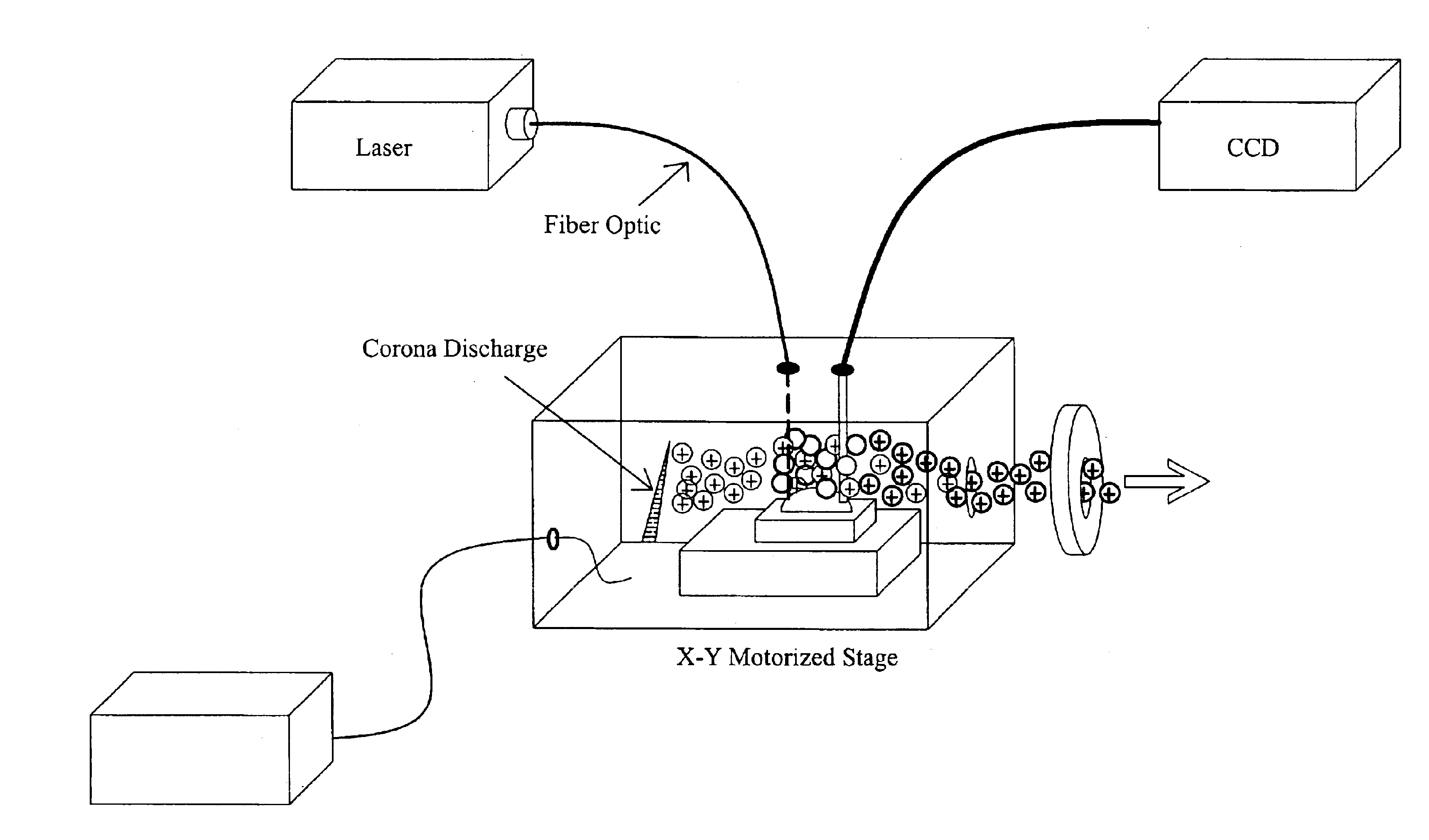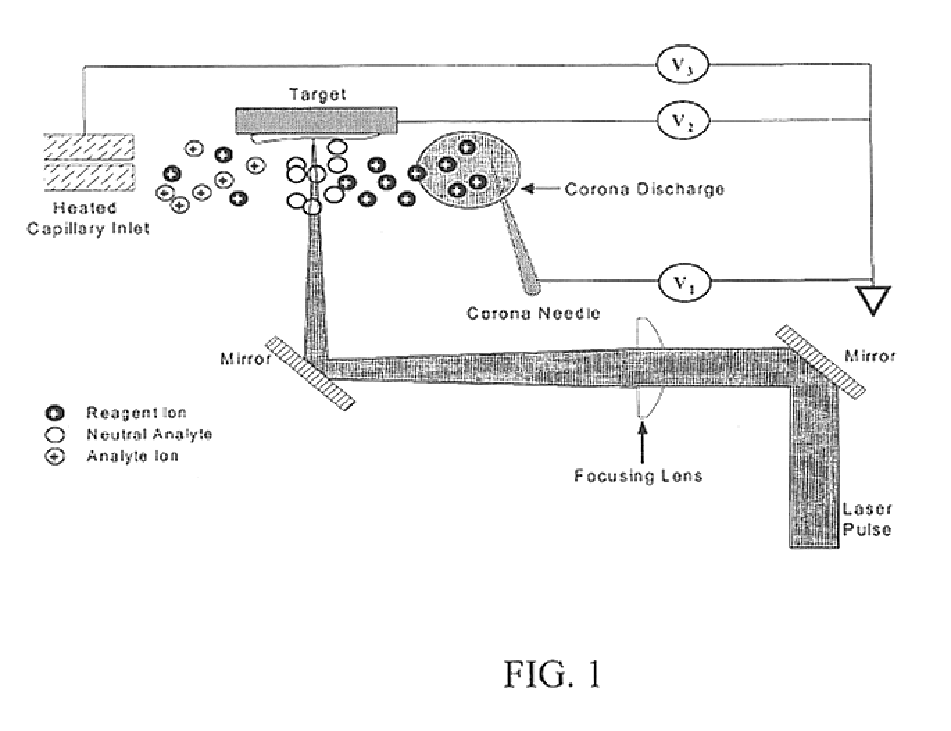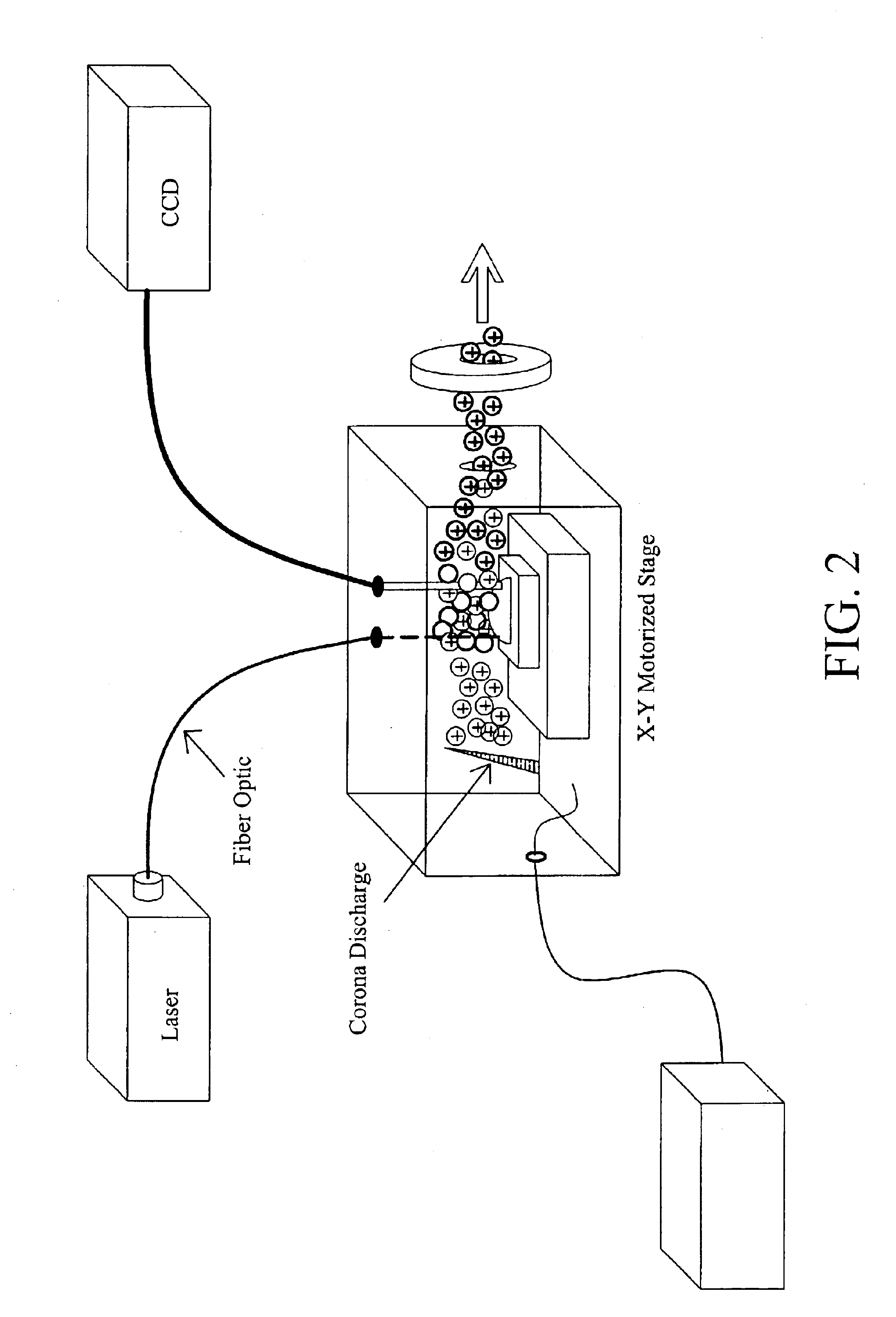Methods and devices for laser desorption chemical ionization
a chemical ionization and laser desorption technology, applied in the direction of instruments, particle separator tube details, separation processes, etc., can solve the problems of high operating costs and persistent problems of facilities capable of both techniques, and achieve the effect of increasing the population of gas-phase ions
- Summary
- Abstract
- Description
- Claims
- Application Information
AI Technical Summary
Benefits of technology
Problems solved by technology
Method used
Image
Examples
example 1
[0060]Analysis of Spiperone and Reserpine
[0061]A specific embodiment of an AP-LD / CI source interface, as shown in FIG. 1, has been designed around a stainless steel, heated capillary, atmospheric pressure inlet (ThermoFinnigan, San Jose, Calif., USA). The corona needle was positioned approximately 1.5 cm (on-axis) from the heated capillary inlet and operated at potentials (V1) of +5.3 and +8.1 kV, from a standard ESI power supply (Analytica, Branford, Mass., USA). Samples were applied to a 4 mm diameter stainless steel target. The target was approximately centered between the heated capillary inlet and the corona needle and was slightly offset (ca. 2 mm) from center. To improve ion transport at atmospheric pressure, an offset potential (V2) of +2 kV was applied to the target by a power supply (Model 205A, Bertan Associates Inc., Hicksville, N.Y., USA). Desorption of neutral molecules was accomplished by irradiation of the target with a 10.6-μm pulsed CO2 laser (μ-TEA, Laser Science ...
example 2
[0072]Analysis of Peptides
[0073]This example relates to the use of an LD-APCI source which utilizes a laser pulse to desorb intact neutral molecules, followed by chemical ionization via reagent ions produced by a corona discharge. This source employs a heated capillary atmospheric pressure (AP) inlet coupled to a quadrupole ion trap mass spectrometer and allows sampling under normal ambient air conditions. With this arrangement, desorption is decoupled from the ionization allowing for the individual optimization of each step with increased efficiency and selectivity. In MALDI, matrices must not only assist with the transport of the analyte into the gas-phase, but must also provide a means for ionization. However, in LD-APCI the matrix containing the analyte need not assist with the ionization, thereby opening the door to countless new possible analyte containing matrices, including polyacrylamide gels. Using the LD-APCI source, we present here the first mass spectrometric analysis o...
PUM
 Login to View More
Login to View More Abstract
Description
Claims
Application Information
 Login to View More
Login to View More - R&D
- Intellectual Property
- Life Sciences
- Materials
- Tech Scout
- Unparalleled Data Quality
- Higher Quality Content
- 60% Fewer Hallucinations
Browse by: Latest US Patents, China's latest patents, Technical Efficacy Thesaurus, Application Domain, Technology Topic, Popular Technical Reports.
© 2025 PatSnap. All rights reserved.Legal|Privacy policy|Modern Slavery Act Transparency Statement|Sitemap|About US| Contact US: help@patsnap.com



